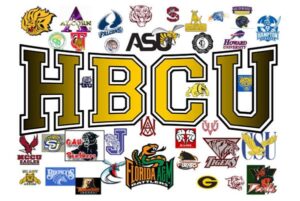
When you think of college football, you more often than not think about Division I, predominantly white institutions being at the top of the mountain. And while this is true, it wasn’t so long ago that some of the best talent was coming out of historically Black colleges and universities on a regular basis.
Today’s HBCU football scene is triggering memories of the 1960s as the rejuvenation of HBCU football is upon us.
HBCU football of late has been mostly known for the halftime shows, but prior to the 1970s, the games were just as memorable as the bands’ performances. But how did the games become so under-appreciated in today’s society? Why is “rejuvenation” even necessary?
In the late ’60s, many schools in the South were starting to integrate their football programs.
Prior to the Civil Rights Act of 1964, top schools of today like Alabama, Florida, Florida State and Texas would not allow Black students. Black college football had already been established and played since 1892. HBCUs became a haven for top Black talent in the South in the 1950s and ’60s, and this is when the heyday of HBCU football began.
HBCUs were at their peak in football during this era.
The late, great Paul W. “Bear” Bryant, Alabama’s football coach during the ’60s and 70s, is credited with being the first to notice the shift in power between HBCU talent and PWI talent, and he began to push for the integration of football in the South.
After almost a decade of success, Alabama’s all-white teams were losing their grip on the mountain top and at the end of the decade, they were barely winning 50 percent of their games. This was the perfect circumstance for Bryant to prove it was time for integration in order to stay at the top. This realization also meant that the dominance of HBCUs would fizzle out and soon be all but a myth. However, in order to showcase this epiphany, Bryant would not send for HBCU opponents. He simply looked out west to the No. 1 team of the time, a fully integrated USC team featuring an all-Black backfield and a Black assistant coach.
On September 12, 1970, the first integrated football game in Alabama was played between USC and Alabama in Birmingham.
Following the Crimson Tide’s 42-21 defeat behind USC fullback Sam Cunningham’s 135 rushing yards and two touchdowns, Alabama, along with like-minded institutions in the South, started to change its position on integration in the sport.
“Sam Cunningham did more to integrate Alabama in 60 minutes than Martin Luther King Jr. did in 20 years,” An assistant coach for Alabama, Jerry Claiborne, said.
Though a bit of hyperbole in totality, Claiborne’s words rang true for college football in the Deep South.
“What they saw was the future,” Cunningham in a 2016 interview with ESPN’s Ted Miller said. “Their team was eventually going to be integrated.”
Schools like Syracuse had already begun changing the tide on integration in the North with players like Jim Brown, Ernie Davis and Floyd Little being key components in the school’s success in the 1950s and 60s, but integration in the South was a much more impactful event.
By the end of the 1970s, the recruitment of Black players to white southern universities was no longer an anomaly; it was the blueprint to success.
On the surface, this was a great signal of progress for race relations in the South, but for HBCU football, it was the beginning of a drought.
Once successful programs like Grambling, Southern and Florida A&M were dealt the short end of the stick and their bands became the sole attraction at games.
However, in recent years, there has been an uptick in coaching and player talent, as well as popularity in HBCU football that is starting to resemble the golden era of the 1950 and ’60s.
As HBCUs are expanding in academic excellence across the country, it is also great to witness HBCU athletic departments elevate into the same level of excellence. With Jackson State’s hire of football Hall of Famer Deion Sanders, HBCU athletic programs are well on the way to recapturing the glory days with a bright future to come.